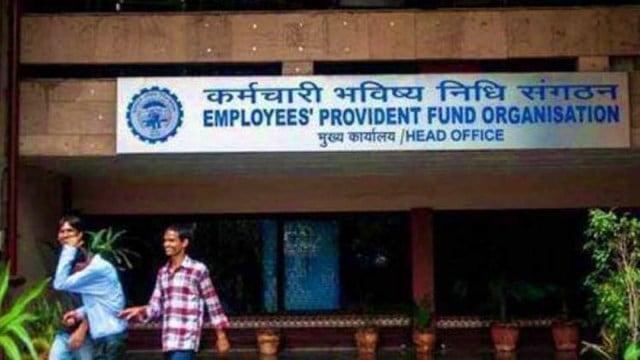The Employees’ Provident Fund Organisation (EPFO) plans to set up a round-the-clock multilingual “contact centre” with the aim of offering a single-window interface to subscribers wanting to register a complaint or needing recourse to a redressal mechanism.
The move to set up an integrated call centre for its nearly seven crore active subscribers has come in the wake of the retirement fund body facing backlash on social media platforms in recent months over delays in resolution of complaints and rising rates of rejection of settlement claims.

The EPFO has floated a tender for setting up this contact centre, which would be functional 24×7 and 365 days, with “quality people, a robust system which can replace EPFO’s grievance registration portal (EPFiGMS) with a more advanced and sophisticated grievance system”.
Story continues below this ad
The aim is to “hear/ understand the grievance across the multi-channel [helpline number, landline phones of various offices, walk-in, grievance registration portals, WhatsApp, social media (Facebook, Twitter, Instagram etc.), physical Daks, ChatBot, UMANG, e-mails etc.]”, to allow problem-solving by linking the EPFO’s head office with zonal offices and regional offices, and proactively addressing stakeholders’ issues and keeping them informed on a real-time basis, the EPFO tender document said.
The EPFO has listed 23 languages in the tender: Hindi, English, Assamese, Bengali, Bodo, Dogri, Gujarati, Kannada, Kashmiri, Konkani, Maithili, Malayalam, Manipuri, Marathi, Nepali, Odia, Punjabi, Sanskrit, Santhali, Sindhi, Tamil, Telugu and Urdu.
“EPFO is looking to transform the EPFO Helpline into an Integrated Grievance Management System with a new grievance registration software and intends to put necessary channels to govern, monitor and improve subscriber satisfaction by way of redressal of grievances, automate processes across offices to resolve issues faster, improve service speed and quality by automating common requests from issue to resolution,” it said.
Earlier, the EPFO had started a helpline with a toll-free number (1800118005) which was later replaced with a short code (14470) to facilitate redressal of queries and provide information related to its services. However, the helpline number was mostly unreachable.
Story continues below this ad
Queries sent by The Indian Express to the Ministry of Labour and Employment, regarding the operational status of the existing helpline facility and the proposed new call centre, did not elicit any response.
With the proposed call centre, the EPFO will replace the existing grievance registration portal, EPFiGMS, with a more advanced registration and resolution software. “The objective is to enable EPFO by providing an automated solution for auto-responses to e-mails, WhatsApp, social media, chatbot for common and general requests and queries. (It will) enable EPFO to use inbound/ outbound calls as well as use our Omnichannel for responding back to the stakeholders, to get their feedback as well as for call back to attend the missed calls,” it said.
Prospective bidders “should have implemented at least two call centre projects of 500 seats each in the last three years from the date of EOI. The call centre must have been in operational stage as of now,” the EPFO tender said.
The EPFO has been working on revamping its software solutions. Last month, the Centre for Development of Advanced Computing (C-DAC), a unit of the Information Technology (IT) Ministry, which is building a central IT system for the EPFO, wrote to the Ministry of Labour and Employment about delay in receiving key software intervention to meet the ministry’s requirement of reducing the number of rejected claims.
Story continues below this ad
The IT Ministry is learnt to have told the Labour Ministry that though the project was initiated in January 2023, C-DAC was yet to receive some of the requirements from the EPFO. “This is delaying subsequent design and development stages by C-DAC,” the letter said.
The high rate of rejection of claims by the EPFO has been a concern, especially in recent months. In February, The Indian Express had reported that the rejection rates of EPF final settlement had surged from around 13 per cent in 2017-18 to nearly 34 per cent in 2022-23, which means that one of every three claims are being turned down.
According to official data, of the total 73.87 lakh claims received for final settlement in 2022-23, 33.8 per cent (24.93 lakh) were rejected, 46.66 lakh were settled, and 2.18 lakh remained as “closing balance”. Over the years, there has been a steady uptick in the rejection rate – it was around 13 per cent in 2017-18; 18.2 per cent in 2018-19; 24.1 per cent in 2019-20; 30.8 per cent in 2020-21; and 35.2 per cent in 2021-22.
EPFO officials had told The Indian Express that a key reason for rejection of claims was a complete shift to the online system for processing them. Earlier, according to them, verification of documents for claims would be done at the employers’ end, and then be sent to the EPFO. Now, it has been linked to Aadhaar and 99 per cent of the claims are settled through the online portal.

































